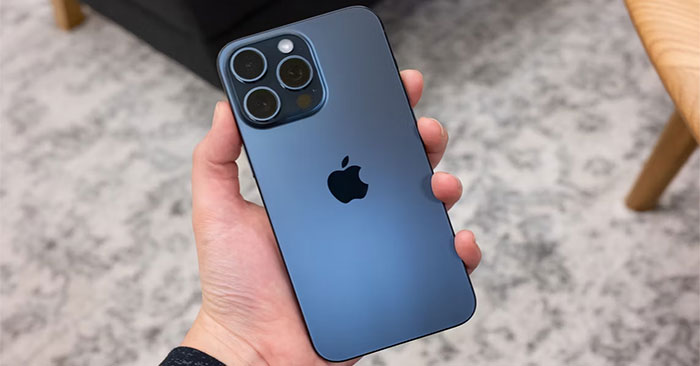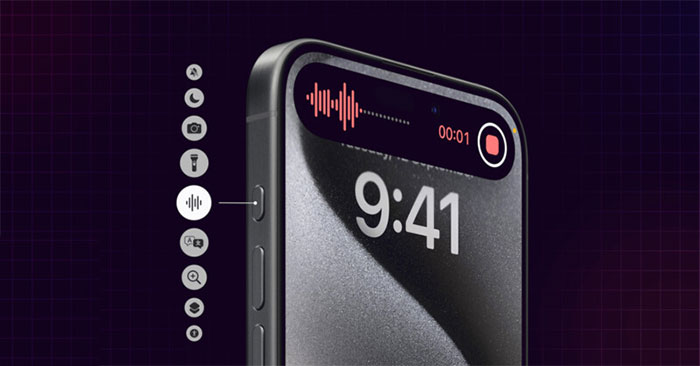How to free up RAM on iPhone
One of the factors that make iOS successful is its ability to self-optimize and performance stability. Apple's operating system is smart enough to effectively manage apps and tasks running in the background, as well as optimize RAM accordingly. However, there may be times when you need to take matters into your own hands and free up your iPhone's RAM manually.
When do you need to control your iPhone's RAM?
Similar to other smartphones in general, iPhone possesses limited hardware resources, such as RAM, memory, processor, battery, etc. In general, this hardware configuration satisfies most needs. all common user tasks. To ensure efficient RAM management, iOS uses a variety of techniques, such as sending some memory-intensive apps into ROM memory (to free up RAM for any new apps that users may want to launch). Furthermore, the iPhone's operating system is a master at prioritizing tasks, allowing the system to operate much more efficiently than an Android device with the same level of RAM.
Therefore, you almost never have to manually free up iPhone RAM, simply because iOS manages it so well. However, over time, as your iPhone ages, its performance will decrease, leading to less stability in some situations. This is especially true if you're multitasking across multiple apps, experiencing software errors, or running intensive processes in iOS. As a result, your iPhone may slow down or freeze.
The most common 'symptoms' include a screen that feels poorly responsive, an inability to open new apps, and a phone that keeps crashing. This can also lead to longer app startup times, app crashes, increased shutter lag while taking photos, and slow user interface.
However, a quick restart can improve the situation almost immediately because the process will free up RAM, allowing your iPhone to operate smoothly again.
How to free up iPhone RAM
Clearing RAM will free up any stuck processes and reduce the load on your iPhone. iOS does not provide an option that allows you to clear RAM directly. Instead, you need to reset the software or restart the device manually.
If you're using an iPhone with Face ID, press and hold the volume button and side button, then drag the power off slider to turn off iPhone. Now, wait about 30 seconds and then turn your phone back on.
 How to free up RAM on iPhone Picture 1
How to free up RAM on iPhone Picture 1
If you use an iPhone with Touch ID, press and hold the side Power button, then drag the power off slider to turn off the device. Wait 30 seconds then press and hold Power until you see the Apple logo. On iPhone SE (1st Generation), the Power button will be located on the top edge of the device.
This is the easiest, simplest way to not only free up your iPhone's RAM but also fix various problems like Bluetooth, Wi-Fi, camera, etc. malfunctioning. With just a few simple steps, you can resolve a variety of software and hardware errors, so this is a useful trick to keep in mind.
You should read it
- iPhone 12 marks 13 years of change for Apple
- How to restore original settings Reset iPhone
- Instructions to reset the network, reset the network connection on iPhone
- Compare iPhone 13 Pro and iPhone 12 Pro
- How to Hard Reset iPhone 13 when having problems
- How to reset iphone, reinstall iPhone without losing data
- iPhone 8 has a bug that automatically reboots due to production and this is a way to check for Apple to fix it for free
- Let's look back at all the iPhone generations Apple has launched over the past decade
- Basic instructions for using iPhone 6, iPhone 6 Plus
- How to recover data on iPhone?
- Apple again sells iPhone SE again - Starting today
- Should iPhone 7, 7+ update iOS 14?
May be interested

Is the Focus feature on iPhone similar to Do Not Disturb?

How to turn off notification flash on iPhone

This is a camera setting option on iPhone 15 that you should take note of

Is it safe to disable Android System Intelligence?

How to adjust flash brightness on Android phones and iPhones

How does the Action button on iPhone 15 Pro work?






 How to free up to 6GB of internal memory for iPhone
How to free up to 6GB of internal memory for iPhone How to download free music for iTunes and iPhone
How to download free music for iTunes and iPhone Top iOS apps are free and discounted (May 24, 2019)
Top iOS apps are free and discounted (May 24, 2019) 8 apps cost VND 550,000 being free for iOS
8 apps cost VND 550,000 being free for iOS 38 best free apps for the new iPhone
38 best free apps for the new iPhone Apple launches a free iPhone 12 repair program with audio problems
Apple launches a free iPhone 12 repair program with audio problems